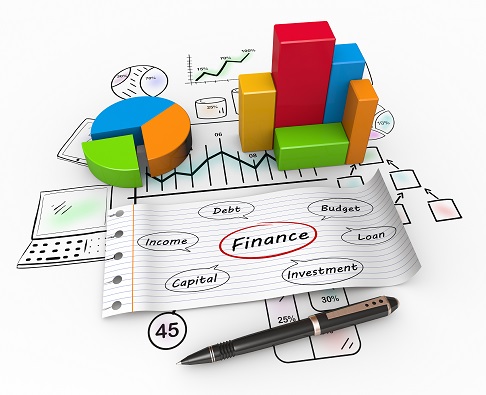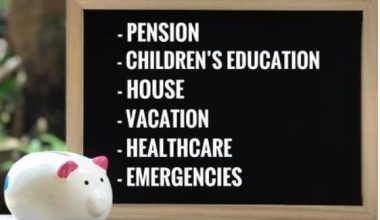Economic theory advocates monetary and fiscal measures to stimulate economic growth during an economic slowdown. If the growth slowdown is sharp, synchronized monetary and fiscal stimulus is desirable. However, there are limits to both monetary and fiscal policies. A loose monetary policy and accommodative monetary stance will, after a lag, stoke inflation. Fiscal stimulus through tax cuts and increased public expenditure, too, will push up inflation after a lag particularly when excess capacity in manufacturing declines.
No room for monetary stimulus
Globally, the pandemic and the consequent severe recession necessitated synchronized monetary and fiscal stimulus. Central banks and governments acted quickly to provide the stimulus. Now, after almost 22 months of stimulus there are clear indications of trends that warrant a change in policy responses. The major global threat to growth recovery now is the rising inflation threat. Globally, inflation is trending up. The problem with inflation is that can soon get entrenched. Therefore, anchoring inflationary expectations is important. This requires monetary tightening, i.e., raising interest rates and reducing the excess liquidity in the system. In other words, fiscal policy will have to do much of the heavy lifting to ensure that economic growth sustains.
Fiscal stimulus too has limits
Unbridled fiscal expansion, too, is fraught with dangers. Rising fiscal deficit will push public debt to GDP to unsustainable levels impacting financial stability. India’s Debt to GDP ratio is now around 90 percent, clearly beyond safe limits. It is in this backdrop that finance minister Nirmala Sitaraman would be presenting the 2022 union budget.
The economy is smartly bouncing back from the massive 7.3 percent contraction during FY21. In FY 22 the growth is likely to be around 9.3 percent. The top priority of the government should be sustaining the momentum in economic growth. RBI provided monetary stimulus to growth in 2020 and 2021. Now, there is no scope for monetary stimulus. Since inflation is now emerging as a global problem, central banks will be raising interest rates in 2022. RBI also will be raising interest rates in 2022. Therefore, stimulus for growth has to come from fiscal policy, through the budget.
Expect big infrastructure investment proposals
If high growth is to sustain investment has to increase. India’s investment to GDP ratio, which was above 39 percent in 2008 has been steadily coming down and is now around 32 percent. The top priority of policy should be to raise investment. Since capacity utilization is low in industry, we cannot expect private capex to rise. Therefore, the government will have to push up investment by stepping up public expenditure on infrastructure. Major infrastructure investment programs can be expected in the Budget.
More measures to help MSMEs
The pandemic has impacted people at the bottom of the pyramid disproportionately. Most of the MSMEs have been hugely impacted. India’s 6.3 crore MSMEs employ 11.1 cr people and contribute 29 percent to the GDP and 40 percent to exports. Therefore, it is hugely important that the MSME segment revives strongly. Budget 2021 provided relief like collateral free loans guaranteed by the government. The MSME segment needs more assistance from the government. This can be expected from the Budget.
Relief to the poor
Millions lost their jobs and livelihood due to the pandemic. People at the bottom of the pyramid had been the worst affected. Relief to this segment should continue. Higher allocation for MGNREGA and P M Kisan Samman Nidhi schemes are likely.
Measures to boost the startup ecosystem
India’s startup eco system is emerging as one of the most vibrant in the world. In a recent business meeting, the prime minister promised massive changes in the startup ecosystem. He said, “The first is to liberate entrepreneurship and innovation from the web of government processes and bureaucratic silos. Second, is creating an institutional mechanism to promote innovation. And third, is handholding young innovators and enterprises.” The budget is likely to walk the talk.
Tax relief, if any, would be minimal
Since the fiscal deficit (6.8 percent in 2021 budget estimates) is high and Debt to GDP is near 90 percent, fiscal consolidation is important. This requires buoyant tax revenue. Therefore, it would be unrealistic to expect major tax concessions from the budget. However, some tax relief in personal income tax for those in the lower income tax slabs is likely.
Road map for fiscal consolidation
Even though higher fiscal deficit is justifiable during this pandemic crisis, it is important that the finance minister comes out with a clear road map for fiscal consolidation. Since fiscal deficit and Debt to GDP ratio are excessive, fiscal consolidation is important. Since Nirmala Sitaraman has been serious about fiscal discipline, a road map for fiscal consolidation can be expected in the budget. This is important to instill confidence among investors, particularly Foreign Portfolio Investors.
Election eve populism?
Since 2022 budget is being presented on the eve of elections to the five states, some vote catching populism cannot be ruled out. Election eve budgets have always been less reformist and more populist. Even with a bit of populism, if the finance minister sticks to fiscal consolidation and reforms, that would be a good bargain.







